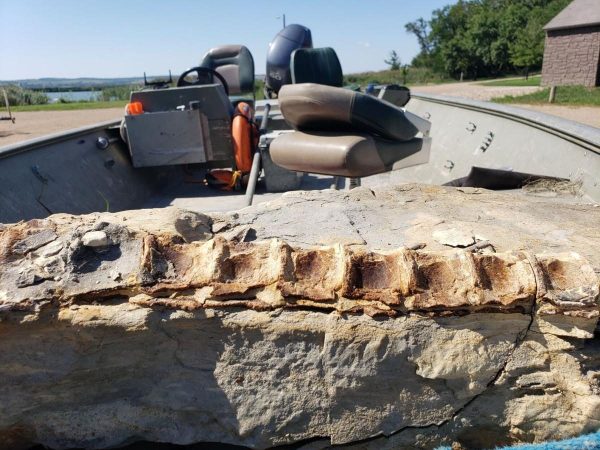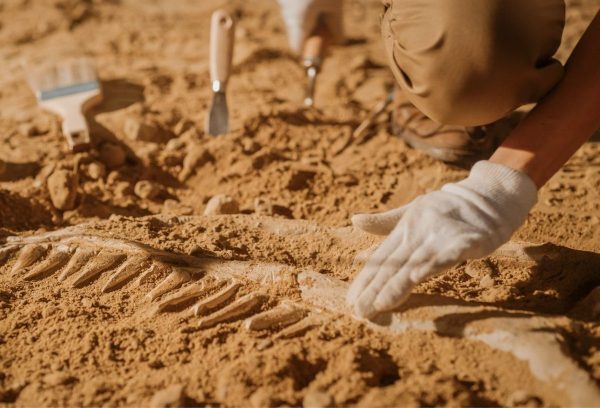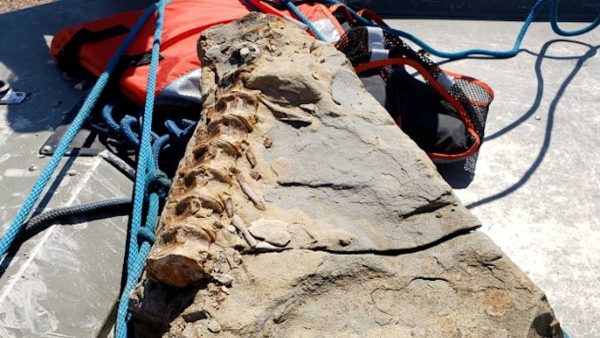A fishing trip along the Missouri River in Nebraska took an unexpected turn for Andy Moore when he inadvertently hooked a 90-million-year-old fossil. Moore, participating in a fishing tournament, initially thought he had caught a rock with a “horrible cast.”

Upon closer inspection, he believed it to be a recent animal skeleton and took a photo before returning to the tournament.
After posting his tournament photos online, Moore was informed by friends that the find might be more significant than he thought.

A friend pointed out that it was a 90-million-year-old fossil. Moore then reached out to the Army Corps of Engineers, who oversee the riverbed, and they passed the photo to a geologist. Upon revisiting the site with the geologist, using GPS data from the image, they confirmed the fossil’s significance.
The geologist identified the fossil as belonging to a 90-million-year-old bulldog fish, formally known as Xiphactinus audax.

These large fish inhabited the Western Interior Seaway, a body of water that divided North America around 100 million years ago. Bulldog fish were characterized by large upward-opening jaws and jagged teeth.
The fossil, once dried, is slated to be displayed at the Lewis and Clark Visitor Center Museum in Crofton, Nebraska. Bulldog fish fossils can hold significant value, with one complete framed specimen reportedly selling for $107,100 at an auction.

This discovery adds a unique paleontological find to the history of the Missouri River region, offering a glimpse into the ancient aquatic ecosystems that once existed there.





